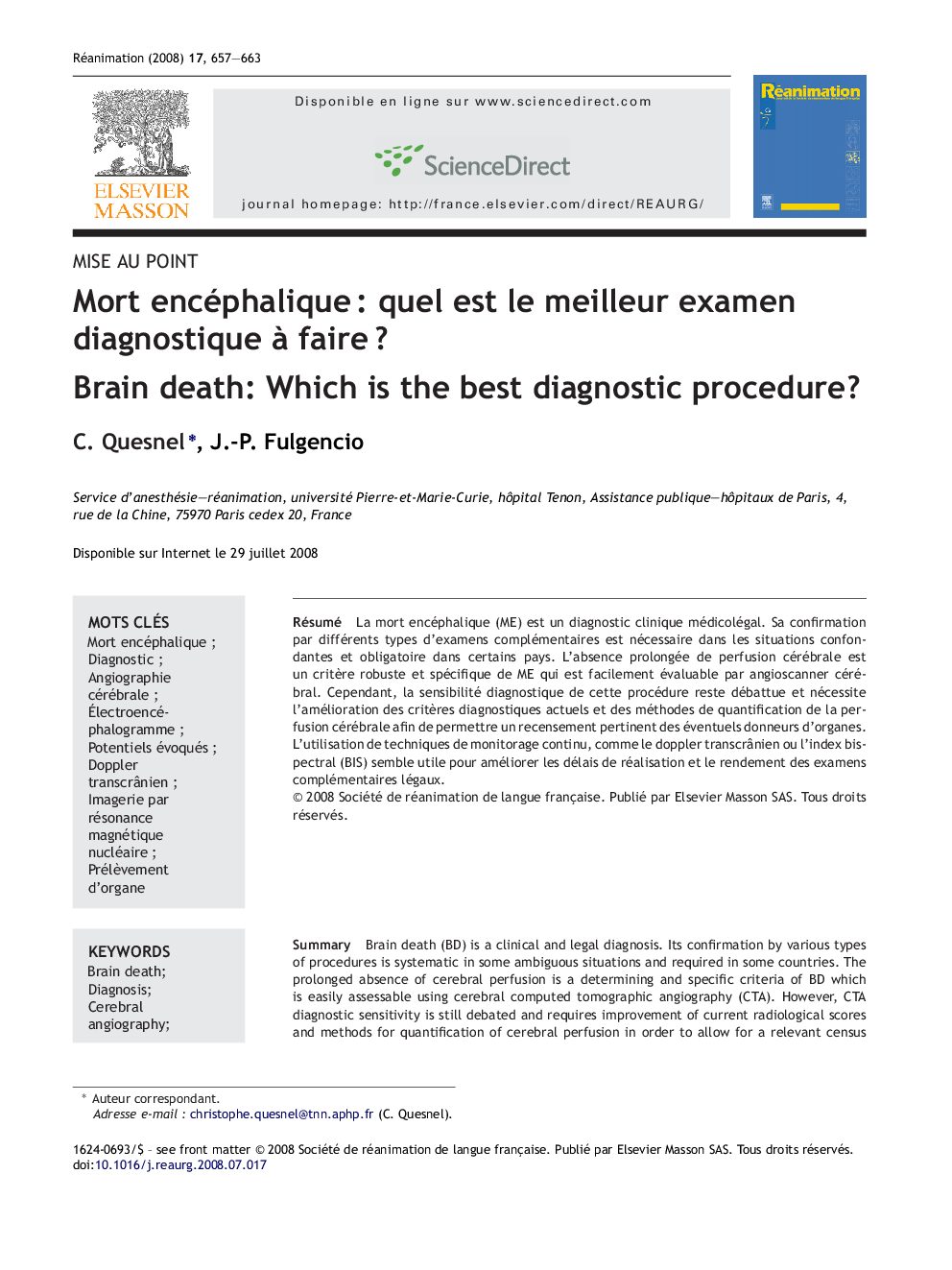| Article ID | Journal | Published Year | Pages | File Type |
|---|---|---|---|---|
| 2613758 | Réanimation | 2008 | 7 Pages |
Abstract
Brain death (BD) is a clinical and legal diagnosis. Its confirmation by various types of procedures is systematic in some ambiguous situations and required in some countries. The prolonged absence of cerebral perfusion is a determining and specific criteria of BD which is easily assessable using cerebral computed tomographic angiography (CTA). However, CTA diagnostic sensitivity is still debated and requires improvement of current radiological scores and methods for quantification of cerebral perfusion in order to allow for a relevant census of organ donors. The use of continuous monitoring procedures, such as transcranial Doppler or bispectral index seems useful in improving timing and performance of legal tests.
Keywords
Doppler transcrânienAngiographie cérébralecerebral angiographyElectroencephalographyOrgan procurementDiagnosisDiagnosticMagnetic resonance imagingImagerie par résonance magnétique nucléairePrélèvement d’organeTCD, Transcranial DopplerMort encéphaliqueBrain deathÉlectroencéphalogrammeEvoked potentialsPotentiels évoqués
Related Topics
Health Sciences
Medicine and Dentistry
Emergency Medicine
Authors
C. Quesnel, J.-P. Fulgencio,
